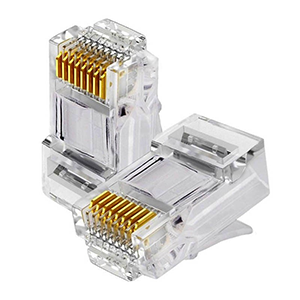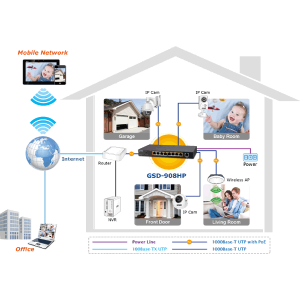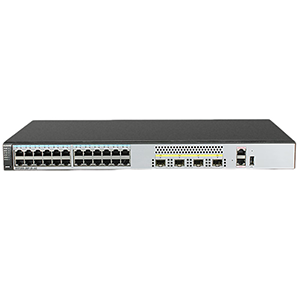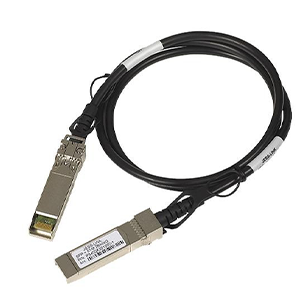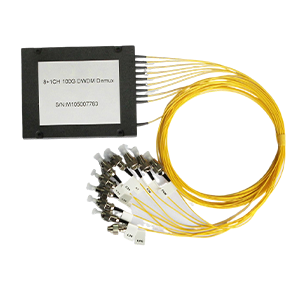Prefabricated fiber optic cables play an important role in communication networks. This article will explore how to choose the right prefabricated fiber optic cables. We will first define the characteristics and advantages of prefabricated fiber optic cables and explain how they differ from traditional on-site installations. Next, we will analyze the key factors that affect the selection of prefabricated fiber optic cables.
Including the requirements for different application scenarios (such as indoor, outdoor, aerospace, etc.), the influence of parameters such as fiber type and number of cores, as well as mechanical properties such as tensile, compressive, and bending resistance, as well as environmental factors such as temperature, humidity, and corrosiveness. Subsequently, we will provide the steps and decision-making basis for the selection of prefabricated fiber optic cables, and explain the common problems and solutions during the selection and installation process.
The basic concept of prefabricated fiber optic cables
Let me introduce you to the basic concept of prefabricated fiber optic cables in detail.
Features and advantages of prefabricated fiber optic cables:
(1) Features:
- Fiber optic cables are prefabricated and terminal processed in a factory environment
- Fiber optic cables, sheaths, metal reinforcements, etc. are assembled in one piece
- Forming a complete fiber optic cable that can be directly installed and used
(2) Main advantages:
- High quality and reliability: manufactured in a factory environment, quality is more controllable
- Easy installation: no need for on-site splicing, greatly improving construction efficiency
- High cost-effectiveness: large-scale production reduces the overall deployment cost
- Simple operation and maintenance: prefabricated terminals eliminate on-site splicing and maintenance
In general, prefabricated fiber optic cables are integrated in factories, which integrates multiple links such as optical cable production and terminal processing, and achieves comprehensive optimization of quality, cost and construction efficiency.
Differences from traditional on-site installation:
(1) Different manufacturing methods
- Prefabricated cables are centrally produced in factories, while traditional cables are installed on-site
- The former relies on large-scale production optimization, while the latter relies on on-site skills
(2) Different construction processes
- Prefabricated cables do not require on-site joints, and the installation process is simple and fast
- Traditional cables require on-site welding, testing and other time-consuming operations
(3) Different maintenance and management
- Prefabricated cables have centralized terminals, making maintenance and repair more convenient
- Traditional cables have many on-site joints, making troubleshooting and repair more complicated
(4) The cost difference is obvious
- Prefabricated cables benefit from large-scale production and have more cost advantages
- Traditional cables are subject to the high labor costs of on-site construction
In short, there are obvious differences between prefabricated fiber optic cables and traditional on-site installation methods in terms of manufacturing, construction, maintenance and management, and prefabricated cables have more technical and economic advantages.
Key factors affecting the selection of prefabricated fiber optic cables
Let me introduce you to the key factors affecting the selection of prefabricated fiber optic cables in detail.
Application scenarios:
- Indoor applications: require fire resistance, bending resistance, small space occupation and other characteristics
- Outdoor applications: require waterproof, UV resistance, tensile resistance and other properties
- Aerospace: require lightweight, high reliability, radiation resistance and other characteristics
According to different application scenarios, the selection of prefabricated fiber optic cables needs to be considered in a targeted manner.
Fiber parameters:
- Fiber type: single mode, multimode, etc. are suitable for different transmission distances and rates
- Number of fiber cores: Select the appropriate number of cores according to the business volume and redundancy requirements
- Fiber size: Parameters such as outer diameter and cladding affect the overall specifications of the cable
For different application requirements, it is very important to select the appropriate fiber parameters.
Mechanical properties:
- Tensile strength: Ensure that there will be no breakage during construction and use
- Compression resistance: Protect the optical fiber from damage caused by external pressure
- Bending resistance: Ensure that the cable can adapt to various installation and wiring requirements
Good mechanical properties are the basis of the reliability of prefabricated fiber optic cables.
Environmental conditions:
- Temperature and humidity range: meet the use requirements of various climate environments
- Waterproof and dustproof performance: ensure normal operation in humid environments
- Corrosion resistance: applicability to harsh environments is very important
It is critical to select the appropriate protection level and material according to the actual use environment.
In summary, the selection of prefabricated optical fiber cables needs to comprehensively consider multiple factors such as application scenarios, optical fiber parameters, mechanical properties and environmental conditions to ensure that specific use requirements can be met.
Selection process and precautions for prefabricated optical fiber cables
Let me introduce you to the selection process and precautions for prefabricated optical fiber cables in detail.
Prefabricated fiber optic cable selection process:
(1) Determine the application scenario
- Evaluate the specific use environment such as indoor, outdoor, and submarine
- Understand the specific requirements for cable performance, size, etc.
(2) Select appropriate fiber parameters
- Determine the fiber type (single mode, multimode) and the number of cores
- Select the optimal fiber according to the transmission distance and bandwidth requirements
(3) Evaluate mechanical performance requirements
- Clear the specific standards for tensile, compressive, and bending resistance
- Ensure that the cable can meet the installation and use environment
(4) Consider environmental adaptability
- Evaluate temperature and humidity, waterproof and dustproof, corrosion resistance and other performance
- Select protection levels and materials that meet the use conditions
(5) Select qualified suppliers
- Prefer prefabricated cable manufacturers with qualifications and production capabilities
- Ensure that product quality and delivery services meet requirements
Precautions during selection and installation:
(1) Accurately evaluate application requirements
- Comprehensively consider various environmental factors
- Avoid performance deficiencies caused by selection deviations
(2) Pay attention to product quality control
- Choose well-known brands with good reputation
- Ensure that products meet relevant industry standards
(3) Focus on joint performance
- Ensure the quality of prefabricated terminations
- Avoid attenuation problems caused by on-site connection
(4) Standardized construction and installation
- Strictly abide by construction specifications and operating requirements
- Avoid human damage or improper installation
(5) Establish a sound maintenance mechanism
- Develop regular inspection and maintenance plans
- Discover and repair potential faults in a timely manner
In short, the selection of prefabricated optical fiber cables requires comprehensive consideration of various factors. During the selection and installation process, it is also necessary to attach great importance to quality control and standardized operation to ensure that the cables can operate reliably for a long time.
Summary
The correct selection and application of prefabricated optical fiber cables are essential for building high-performance and reliable communication networks. Our company has long been focusing on the research and development and production of optical communication equipment and its supporting products, and has rich industry experience. The various types of prefabricated optical fiber cable products we provide have reached the industry-leading level in terms of transmission performance and reliability, and can meet your demanding needs for flexible and efficient network construction.
Whether you need to deploy prefabricated optical fiber cables in telecom operator networks, data centers, or enterprise parks, we can provide you with customized solutions. At the same time, our professional team will provide you with a full range of technical support, including on-site surveys, solution design, and equipment installation and maintenance. Contact us today to learn more about our prefabricated fiber optic cable applications.
Prefabricated Fiber Optic Cable FAQ
A prefabricated fiber optic cable is a cable assembly with connectors already installed on one or both ends, ready for plug-and-play deployment.
Key benefits include faster installation, consistent quality, and avoiding the need for on-site fiber termination and testing.
Important factors include fiber type (single-mode, multimode), connector types, cable length, and environmental specifications.
The fiber count should match the number of connections required, with some additional fibers for spares or future growth.
Popular options include LC, SC, ST, and MPO/MTP connectors, depending on the application requirements.
Verify that the connector types, fiber type, and performance specifications match the ports on your switches, transceivers, and other gear.
Factors like cable jacket material, fiber protection, and bend radius specifications impact durability and installation.
Look for cables from reputable manufacturers that meet industry standards and provide warranty coverage.
Outdoor cables have more robust, weatherproof jackets, while indoor cables focus on flexibility and aesthetics.
Maintain cleanliness, avoid sharp bends, and follow the manufacturer’s storage and handling guidelines.

